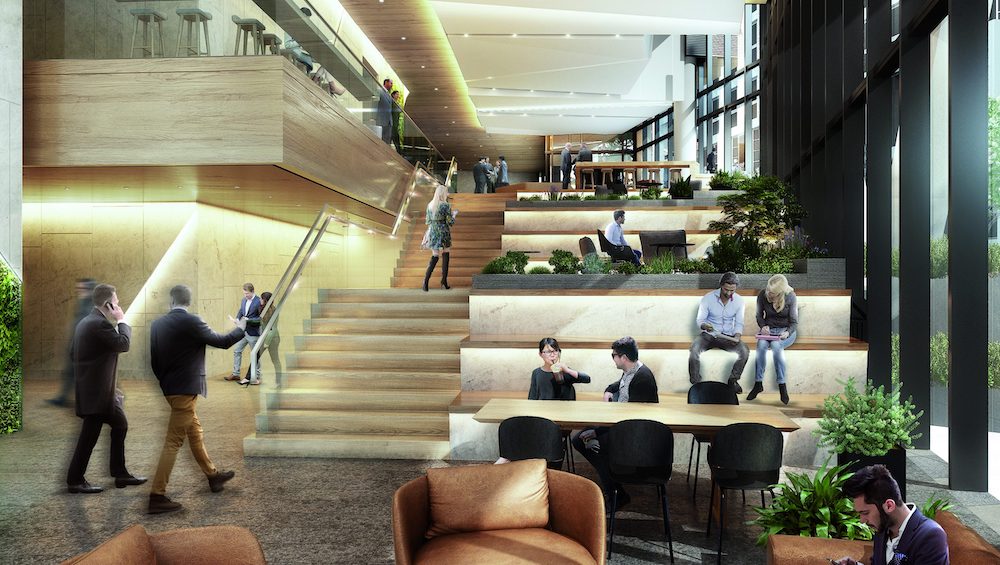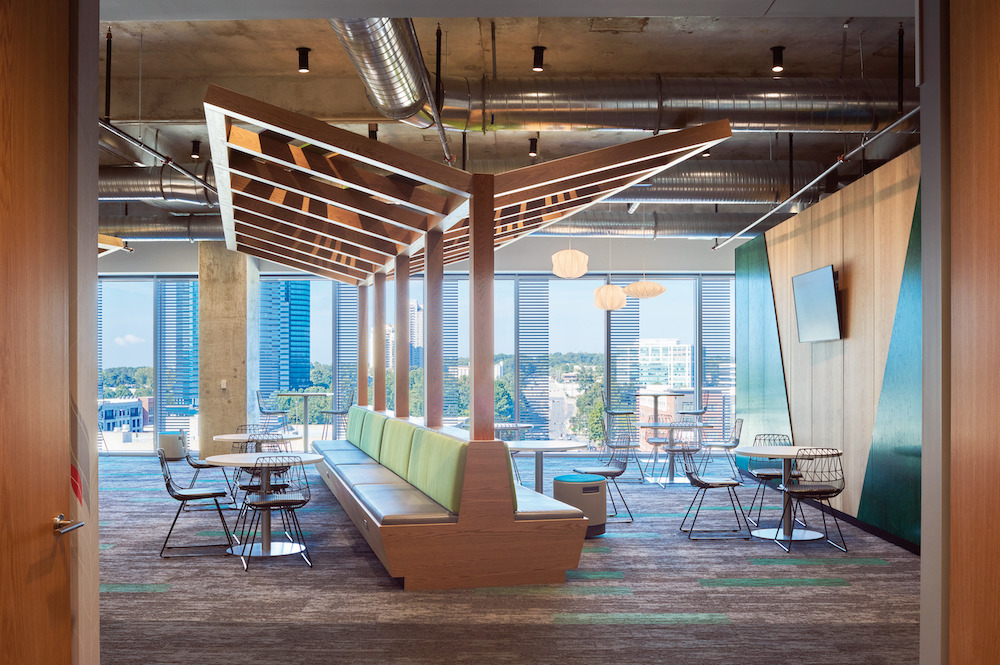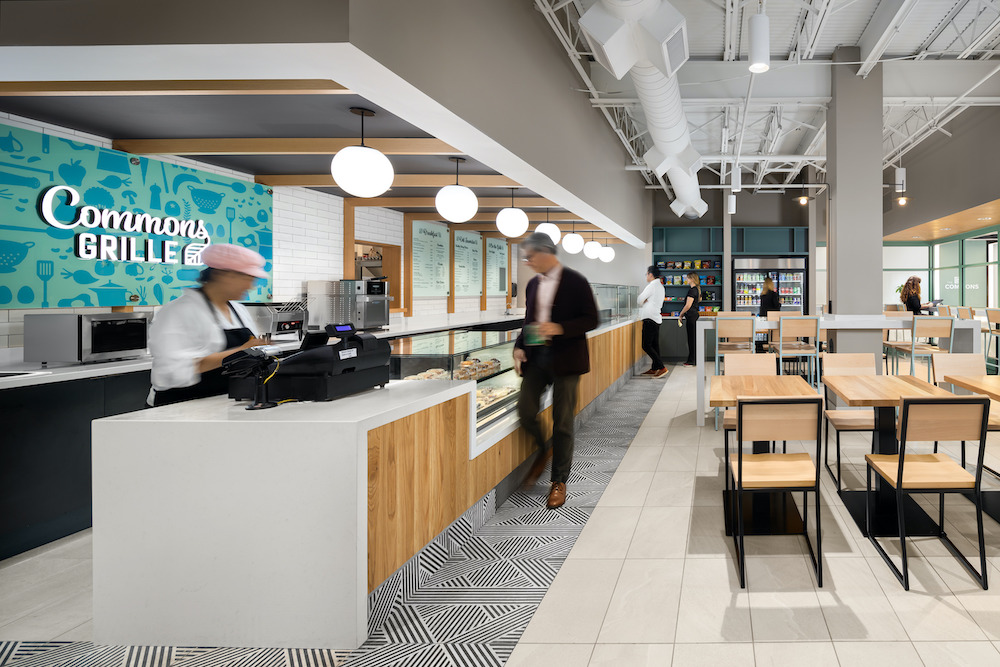Cooper Carry’s Brian Parker explores the importance of enhancing outdoor spaces to create more workable areas and how to bring the outdoors in.

While the pandemic uprooted nearly every industry, the one most changed is arguably the workplace. Workers traded in their cubicles and water cooler chats for their couches and furry friends. And while companies are enticing their employees to come back to the office with hybrid work schedules and the return of happy hours, the physical workplace experience must be changed in order to create an environment that feels comfortable, enhances creativity, improves well-being and supports an overall positive outlook at a time when stress levels among U.S. adults are at an all-time high.
Nature has a profound impact on creating a happy, healthy and productive work environment, which is more important than ever as companies are looking for ways to entice employees back to the office. Enhancing the outdoors to create more workable areas and bringing the outdoors in with biophila and natural light are ways to improve quality of life in a workplace environment and promote flexibility in a formerly traditional office.

Bringing the outdoors in
Future Forum reports in a recent survey that more than a third of knowledge workers (34%) have reverted to working from the office five days a week. With this shift, employee sentiment has dropped to near-record lows, including 28% worse scores on work-related stress and anxiety and 17% worse scores on work-life balance. These statistics demonstrate how the previous workplace model does not bode well in the post-pandemic era.
According to the National Library of Medicine, the interaction with indoor plants may reduce psychological and physiological stress by suppressing autonomic nervous system activity in young adults. Lush greenery may not be the first thing you think of when envisioning an office space; however, it is one of the simplest and least expensive ways to brighten up a room and reduce feelings of anxiety. More complex, but not difficult, ways to incorporate biophilic design are by utilizing natural patterns and materials to maintain a connection to nature within the built environment.
Midtown Union, a tri-tower mixed-use development encompassing nearly a full city block in Atlanta, will feature a plant-filled lobby with natural wooden materials. Still in the construction phase, this office tower will bring the outdoors in with access to fresh air and plant fauna throughout.

The future of the office is outdoors
Fast Company examined buildings across the country and found that new and renovated offices are being designed to include more options for workers to get away from their desks to work outside, promoting opportunities to enjoy a break and gather with coworkers or take their laptops and work in the fresh air.
The Commons at Lake Hearn is a medical office complex in Atlanta that offers employees access to an outdoor area featuring an 1,200-square-foot canopy with a retractable glass roof. As another example, Midtown Union has a 12,000-square-foot outdoor amenity terrace called “The Yard” on the eighth floor as well as elevated landscape decks offering alternative meeting space and open-air work stations. State Farm also prioritized health and wellness for its 6,000 employees by constructing an outdoor amenity deck at its Southeast headquarters, Park Center, in Atlanta.

Having access to outdoor work spaces is important, but not the only way to take advantage of the outdoors. For Park Center, the team also implemented street-level improvements at the site by adding a multi-use trail for pedestrians and cyclists. The trail runs along an “urban creek” between the cities of Sandy Springs and Dunwoody that was previously invisible. Long before the pandemic, the design team saw the potential to enhance this amenity as people increasingly value access to the outdoors as a much needed break from the work environment.
Access to natural light
While biophilia can ease stress and anxiety, access to sunlight is proven to increase the brain’s release of a hormone called serotonin. Serotonin is associated with boosting your mood and helping you feel calm and focused, as published by Heathline. Enlarging windows in an office to allow for more sunshine peering in or shifting workspaces for closer access to windows and the outdoors can invoke feelings of happiness and spark creativity and motivation.
If increased natural light is not an option, even just changing the light bulbs from fluorescent to LED can mimic the same effects that natural light gives. Even just a small change in lighting can dramatically increase one’s mood and productivity.

There’s a myriad of design strategies that office leaders can implement into their workplace that will help increase the happiness of their employees. Nature is a grounding element that regulates the nervous system, invoking feelings of calmness and relaxation. For example, The Commons at Lake Hearn has unique features that include eco-friendly rain gardens, clean air filtration, a healthy restaurant with outdoor seating and WiFi-connected greenspaces for working, meeting and gathering.

Other strategies to consider include improving air quality or pursuing certifications like WELL, which according to IWBI, companies use to prioritize the health and safety of their people, maximize real estate value and optimize the human and social capital performance of their business. The WELL Health-Safety Rating focuses not only on physical changes, but on core areas including cleaning and sanitization procedures, emergency preparedness programs, health service resources, air and water quality management and stakeholder engagement and communication.
As workers return to in-person collaboration at the office, managers must consider the environment they’re returning to. Coming out of the pandemic, health and wellness is a top priority and flexibility is key to ensuring longevity and happiness among the next generation of workers.

